Due to circumstances beyond my control, I’ve gone batty.
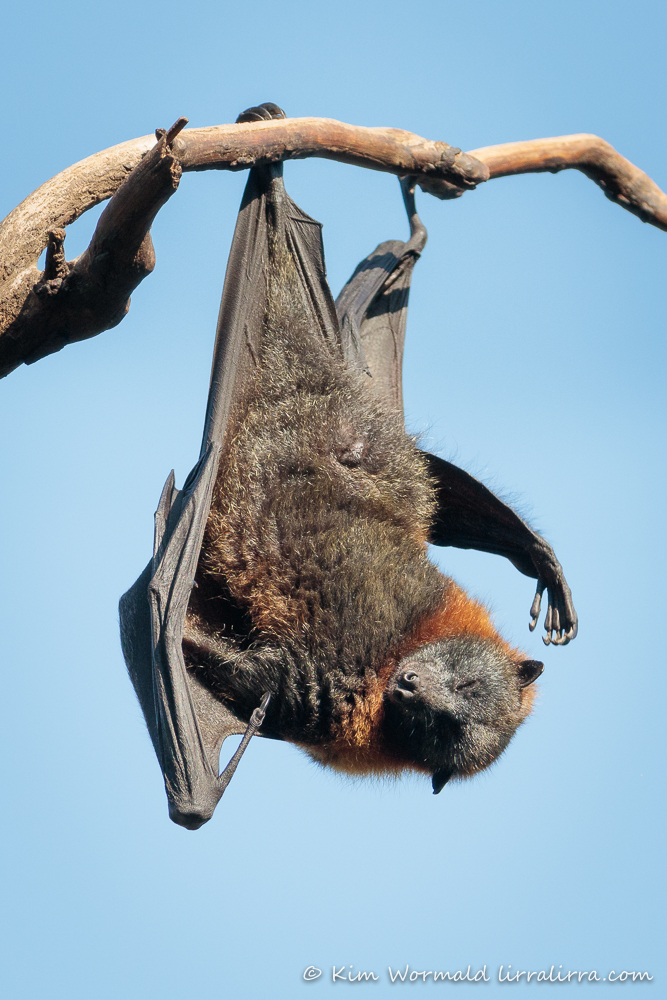
Grey-headed Flying Fox (Pteropus poliocephalus)
1/1000, f/5.6, ISO 800
The post I was working on for this week has taken so long that there won’t be time to finish it today (the sun was shining and I felt compelled to mow the ever-growing grass). Instead I thought I’d share some gorgeous critters that I’ve already prepared, they have wings, they fly and they are quite remarkable.
Grey-headed Flying Foxes are listed as vulnerable, rare and threatened in NSW, SA and Victoria respectively.
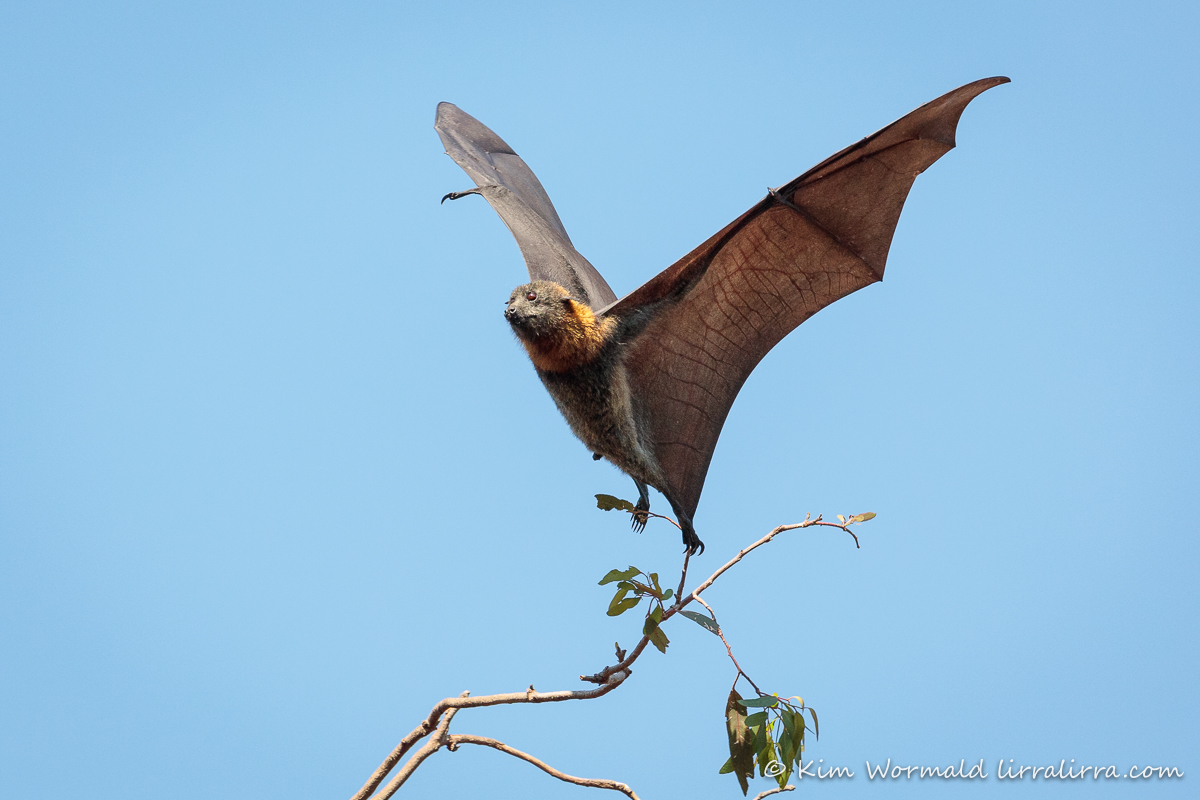 Grey-headed Flying Fox (Pteropus poliocephalus)
Grey-headed Flying Fox (Pteropus poliocephalus)
1/2500, f/7.1, ISO 2000
The Flying Fox above gripped onto the twig with its toes and fell forwards in a less than glamorous landing. It must take skill to know where to land so they aren’t hurt as they flip. Flying Foxes have their preferred perches which would help when negotiating landings.
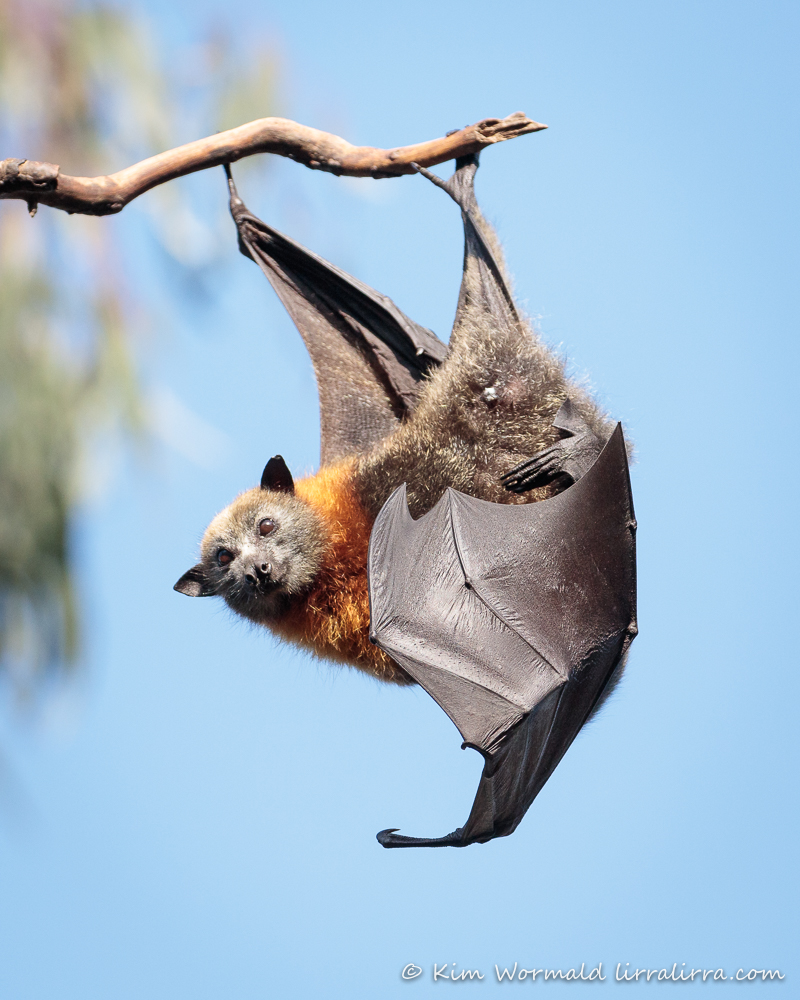 Grey-headed Flying Fox (Pteropus poliocephalus)
Grey-headed Flying Fox (Pteropus poliocephalus)
1/1600, f/7.1, ISO 1600
Grey-headed Flying Foxes weigh between 600-1000g and measure up to 289mm in length. They live in vast colonies often numbering many thousands. There is considerable movement among these populations as they travel between south eastern South Australia and north western Queensland.
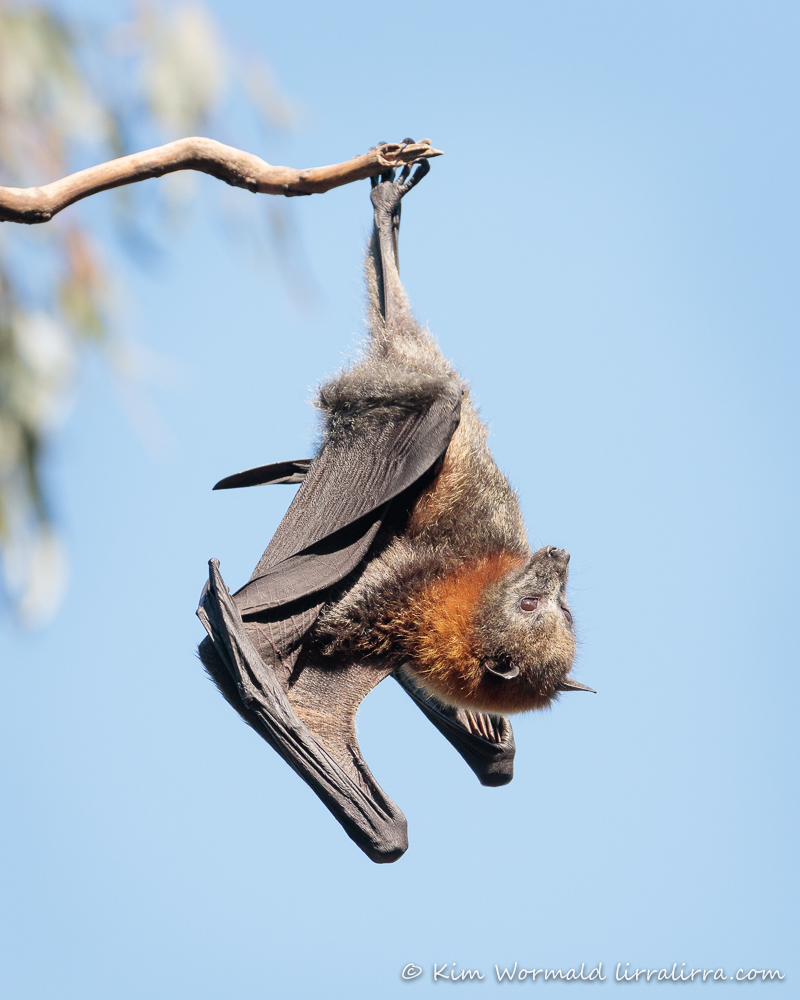 Grey-headed Flying Fox (Pteropus poliocephalus)
Grey-headed Flying Fox (Pteropus poliocephalus)
1/1600, f/7.1, ISO 1600
As a child I used to hang upside down by my toes, hooking them over the top bar of swing sets to get a bat’s eye view of the world (and to startle the watching adults, if any were around). But I definitely needed to hang on with both sets of toes, unlike these crazily agile creatures.
The flying fox above has a sweet profile and looks soft and cuddly. Bats, including fruit bats and microbats, are the only mammals capable of true flight.
WARNING: Despite their sweet looks and lovely natures some flying foxes carry dangerous viruses and it is vital that members of the public do not handle them. If you find an injured bat, of any species, large or small, call a wildlife care organisation who will arrange for a licensed, fully vaccinated rescuer to attend.
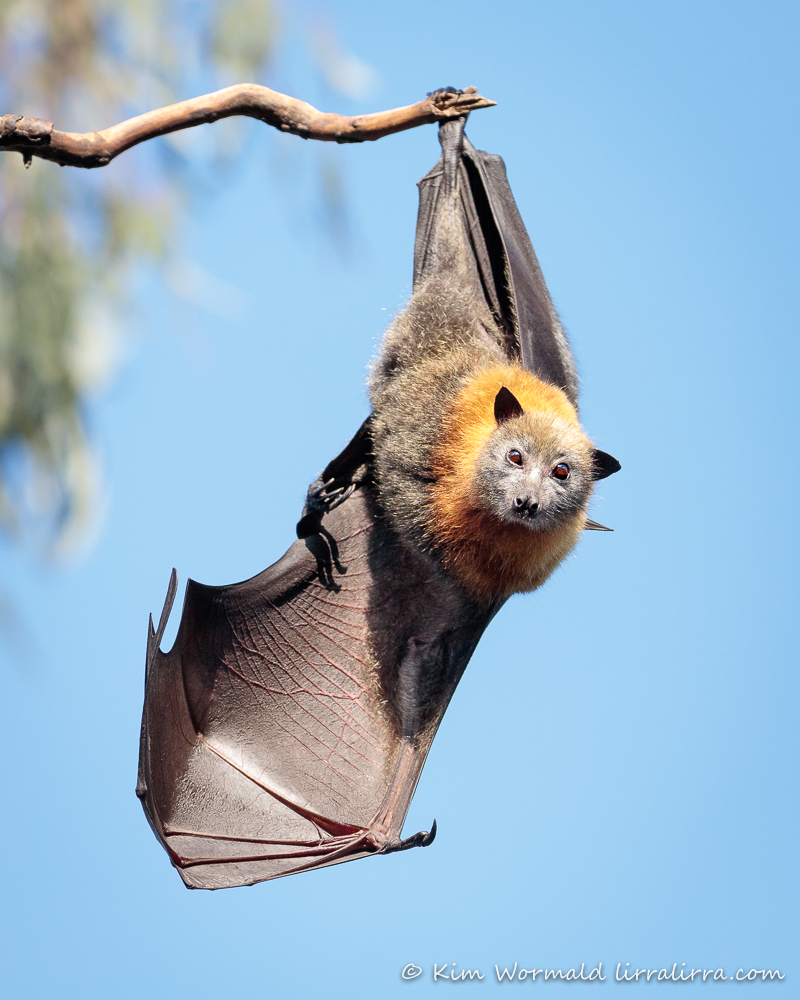 Grey-headed Flying Fox (Pteropus poliocephalus)
Grey-headed Flying Fox (Pteropus poliocephalus)
1/1600, f/7.1, ISO 1600
Flying foxes truly are crazily agile. I love the way this one turned to look directly at me. I also like the pastel colours of the leaves hanging in the background in most of today’s images.
Flying foxes have excellent eyesight while microbats use echolocation.
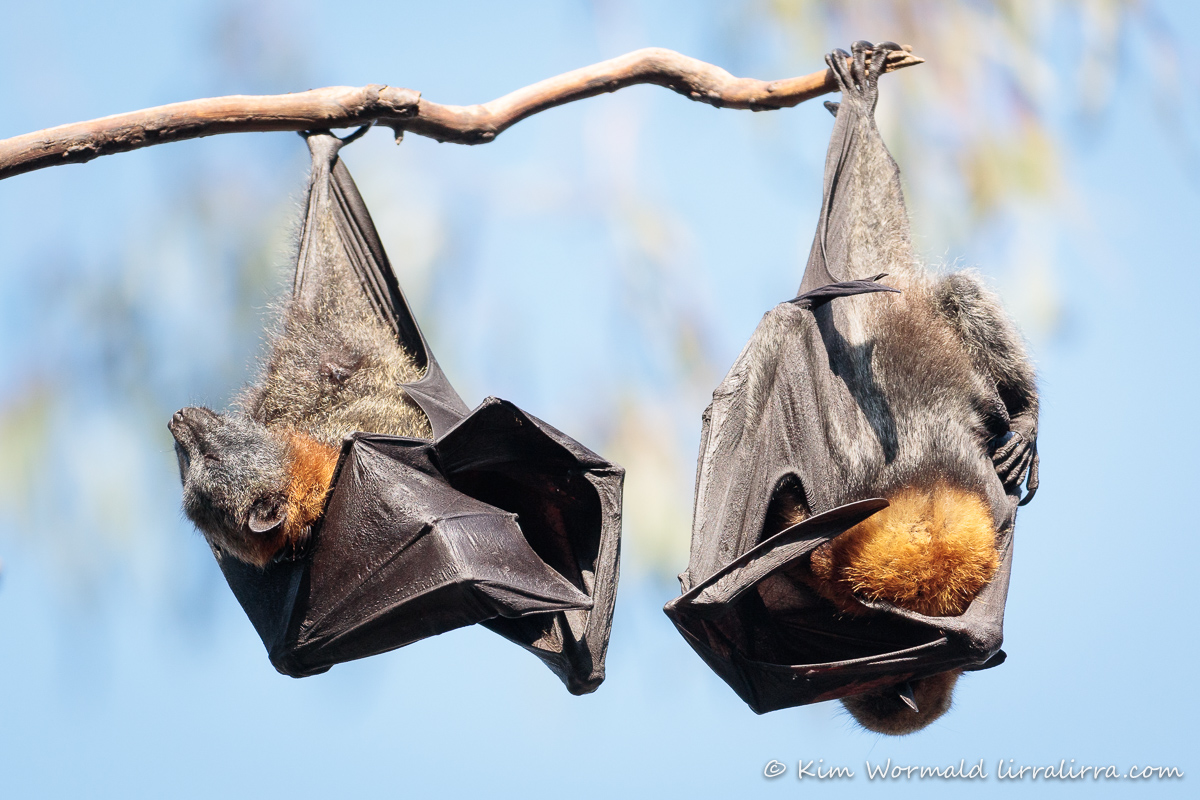 Grey-headed Flying Fox (Pteropus poliocephalus)
Grey-headed Flying Fox (Pteropus poliocephalus)
1/1000, f/5.6, ISO 800
What a life! These flying foxes look so comfortable as they sunbathe in the early morning light. Flying Foxes are world class pollinators and seed-dispersers, and are essential for the health of our forests.
The Australian Geographic Nature Photographer of the Year finalists’ images were shared publicly this week, you can see them here: Nature Photographer of the Year There are some stunning images. My image, The Pollinator, is part of the Animal Behaviour collection. What I’d hoped to share this week were the images taken directly before and after The Pollinator, within a second of each other. The first image shows the honeyeater with its bill deep inside the flax lily while the third image looks the same as The Pollinator but without its halo of pollen. If I had pressed the shutter button a fraction of a second later the pollen would have dissipated and I would have been none the wiser. No wonder I haven’t seen anything like it before.
Happy birding (and batting)
Kim
~ thank you for visiting and commenting
~ use the subscribe box if you’d like to receive a weekly email when lirralirra is updated

Terrific poses and marvelous detail. The burst of pollen …. what can I say? Congratulations for having an image in such a prestigious collection. I look forward to seeing the preceding and following images too.
Thank you David, I was super lucky to get the shot.
I agree Kim, a beautiful image. I look forward to seeing the ‘before and after’ photos also. Congratulations.
Thank you Valda 🙂
Stunning pics of the bats Kim
Thank you Vanessa 🙂
We have a large and changing population of Flying Foxes around our lake in Numurkah. More in summer, less in winter and at the moment about 800. A group arrive at our twenty acres most night at the moment to feed on non-indigenous Sootted Gums which are flowering . The noise at night at night wakes me but they are quite eerie and beautiful flying against the moonlight . Great pollinators, yes . There are about 4000 at Cussen Park in Tatura as well, a mix of Grey-headed and Little Red Flying Foxes. Your gorgeous photos and text can only add to the education about this most misunderstood native genus.
The more I hear about Numurkah the more I think I should hop straight in my car and start driving. For a while in Darwin I lived in a place that overlooked the Arafura Sea, I loved watching the fruit bats swarming out from the mangroves every evening, it was magical. You’re lucky to share your property with them, and it’s extra special that you appreciate them so much.
Huge congratulations on your totally deserved inclusion in that group.
Add me to those with a soft spot for bats. Like most things they have a true beauty which repays closer inspection.
Thank you EC. They are truly remarkable critters, I’m ridiculously fond of them
Flying foxes do have very cute faces. They visit our garden periodically enjoying berries and fruit from native trees. They are also quite partial to pawpaw. Lovely photos, thank you.
They really are cute, I especially like their profiles. I’d love them to visit my garden, you are super lucky. Their cousins used to use my garden when I lived in Darwin, I soon learned not to leave laundry on the line overnight.
What obliging subjects! Great shots Kim. Wonderful exposure and detail. Great work!
Thanks Neil. They were beautifully obliging and very comical to watch.
What beautiful bats! I adore them. They are remarkable creatures and it’s lovely to see their behaviour captured so skilfully.
Congratulations on being a finalist in such a prestigious competition! The Pollinator is a truly incredible image and well deserving of endless accolades.
Your comment is so lovely I wish I could approve it twice!